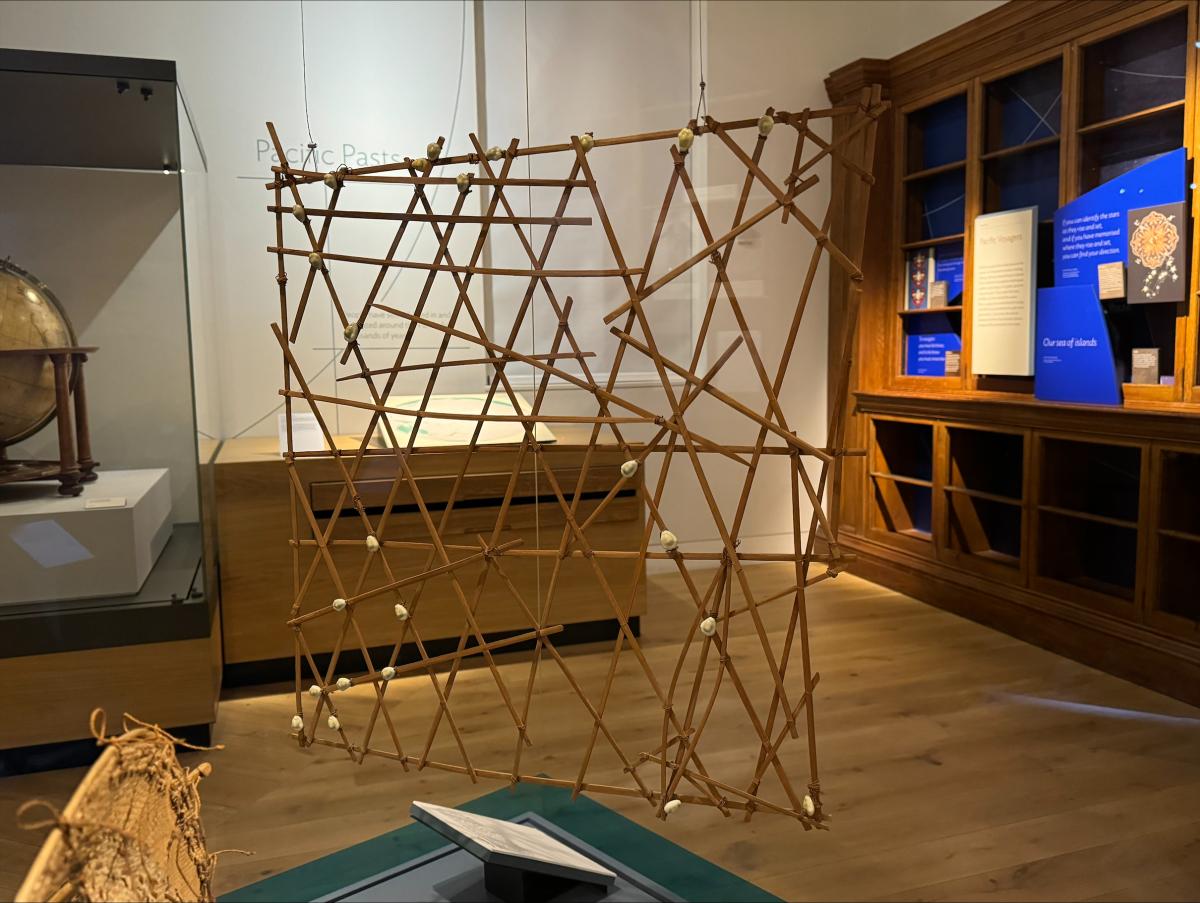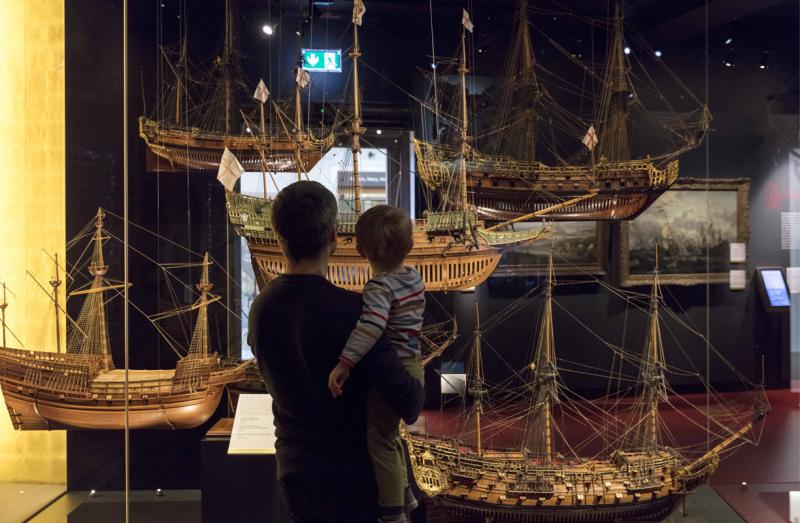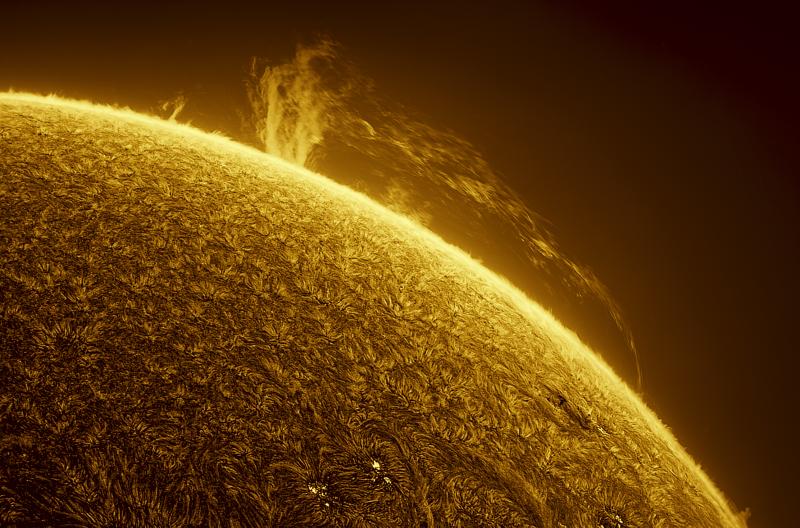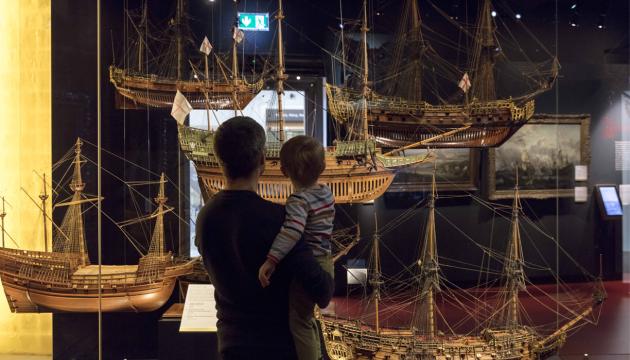
The National Maritime Museum is the world’s largest museum of seafaring.
From the icy Polar regions to the islands of the Pacific, the Museum's galleries tell stories of endeavour, exploration and innovation that have shaped our world.
Marvel at personal items belonging to Vice-Admiral Horatio Nelson, uncover maritime artefacts from expeditions including Endurance, and get up close to naval artworks, ship models and navigational instruments.
With so much to see, where to begin? Set a course for these special items during your free visit to the National Maritime Museum.

Nelson’s Trafalgar Coat
Nelson, Navy, Nation gallery | Level 2
This coat was worn by Vice-Admiral Horatio Nelson when he was killed at the Battle of Trafalgar in 1805.
Nelson led Britain to victory against a combined Spanish and French fleet. However, during the battle he was fatally wounded by a musket shot – you can still see the hole in the coat’s left shoulder marking where the bullet struck.
Made from blue wool cloth, this elaborate coat is adorned with Nelson’s four orders of chivalry: Knight of the Bath, Order of the Crescent, Order of Ferdinand & Merit and Order of St Joachim.
Nelson’s death resulted in an outpouring of public grief, and he received a state funeral at St Paul’s Cathedral.

Marshall Islands stick chart
Pacific Encounters gallery | Level 1
Made from wooden sticks and cowrie shells, this personal map from Majel (the Marshall Islands) in the central Pacific Ocean was used by navigators to remember areas of sea.
The Pacific is the world’s largest ocean, covering one third of the globe. Its vast waters connect more than 25,000 islands and are home to around 1,400 languages.
This Marshallese chart would have been an important tool to teach the art of wayfinding. The curved sticks represent currents and wave patterns while the shells mark specific islands.
Captain Scott's shoes
Polar Worlds gallery | Level 2
These shoes tell a tragic story. In 1910, explorer Captain Robert Falcon Scott embarked on the British Antarctic ‘Terra Nova’ expedition, which aimed to reach the South Pole.
After an arduous journey, Scott and his team of four men arrived at the South Pole on 18 January 1912. However, they were not the first to do so: a Norwegian expedition led by Roald Amundsen had reached the Pole just a month before.
During the return journey, Scott and his men perished in the extreme Antarctic conditions. In November 1912, the frozen bodies of Scott and two of the party were found in their tent.
Scott was found wearing these overshoes, made from sealskin and canvas. They would have been worn over warm, furry boots known as finnesko.
Stories worth sharing
Sign up to our newsletter and receive all the latest news, stories and events from the National Maritime Museum

Nelson’s Ship in a Bottle by Yinka Shonibare CBE
Outside the National Maritime Museum
It's hard to miss this striking artwork outside the entrance of the National Maritime Museum. Made by multidisciplinary artist Yinka Shonibare CBE, Nelson's Ship in a Bottle is a scaled-down replica of HMS Victory, Vice-Admiral Horatio Nelson’s flagship at the Battle of Trafalgar.
The piece draws inspiration from the craft of putting ship models inside glass bottles, which grew in popularity during the 19th century. The ship’s patterned sails reference Indonesian batik designs (the art of decorating cloth using wax and dye), which were mass-produced by Dutch traders and sold in West Africa.
If the sun's shining and you're keen to seek out more art around Greenwich, this walking guide lists some of the best sculptures and displays to look for.

Sea Deity by Eve Shepherd
Sea Things gallery | Level 1
Among the busts on display in the Sea Things gallery, there is one with an evocative backstory. Sea Deity was created by artist Eve Shepherd in 2017, in collaboration with families from Action for Refugees in Lewisham.
Representing a timeless protector, this dramatic figure draws on the lived experiences of forced migration. Look closely to spot the intricate details in the work, from the pepper spray can in the sculpture’s crown to the overcrowded lifeboat at its base.
“This community had been so silenced and underrepresented by history, that I was determined to do whatever it took to make a powerful legacy piece which would hopefully stand the test of time,” Shepherd explains.

Journal of Edward Barlow
Tudor and Stuart Seafarers gallery | Level 2
Filled with adventure, this journal was written by seafarer Edward Barlow in the 17th and 18th centuries. During his long and varied career Edward fought in naval battles, was taken prisoner by Dutch seafarers, and sailed to India and China with the East India Company.
His richly illustrated journal offers a unique insight into life at sea. While documenting key historical maritime events, his account also details the unfamiliar places, customs and wildlife he encountered.
The journal is just one of 100,000-plus works that form part of the Caird Library and Archive at the National Maritime Museum – the world’s largest maritime library and archive collection. From manuscripts and atlases to rare books and periodicals, this treasure trove is available to explore online or in person.

Shackleton’s chronometer
Polar Worlds gallery | Level 2
This marine chronometer played a crucial role in Sir Ernest Shackleton’s Imperial Trans-Antarctic expedition in 1914.
The undertaking aimed to cross the Antarctic from the Weddell Sea to the Ross Sea; however, disaster occurred when the ship, Endurance, became trapped in the ice in January 1915. Endurance sank in October 1915 and the crew escaped to the rocky and uninhabited Elephant Island.
With no hope of being rescued, Shackleton and five crew members set off in the small boat ‘James Caird’ to reach the whaling station on South Georgia – an island 800 miles away. Despite enduring some of the roughest seas on the planet, the crew arrived at their destination just over a fortnight later. Skilled navigator Frank Worsley used this chronometer, a compass and a sextant to successfully chart their course.
Thanks to their efforts, the entire crew of the Endurance was eventually rescued.

'The Kongouro from New Holland' by George Stubbs
Pacific Encounters gallery | Level 1
This artwork captured the public imagination when it went on display at the Society of Artists in London in 1773.
A skilled animal painter, Stubbs was commissioned to create two portraits of a kangaroo and a dingo by scientist Sir Joseph Banks, who had recently returned from Captain Cook’s first voyage to the Pacific (1768-71).
Despite never having seen the animals in person, Stubbs created the artworks based on the sketches, descriptions and animal skins brought back from the voyage.
His paintings are the first depictions of the Australian animals in Western art, and now hang next to each other in the Pacific Encounters gallery.

Baltic Exchange Memorial Glass
Next to the Sea Things gallery | Level 1
Take time out to gaze at these serene stained-glass panels, which feature classical figures and designs. This piece commemorates the members of the Baltic Exchange – an international maritime commerce organisation – who were killed during the First World War.
It was designed by artist John Dudley Forsyth and was originally part of a larger installation in the organisation’s London headquarters. However, in 1992 – just 50 years after the memorial was unveiled, a terrorist bomb exploded outside the Baltic Exchange, killing three people and injuring 91 others. Many of the stained-glass panels were destroyed or damaged in the blast.
After more than 10 years of restoration, the installation was presented to the National Maritime Museum in 2005.

Pocket watch from the Titanic
Sea Things gallery | Level 1
This pocket watch is a relic from the sinking of RMS Titanic – one of the most infamous maritime disasters in history. At 11.40pm on 14 April 1912, the passenger ship struck an iceberg. It sank in the early hours of 15 April, resulting in the loss of 1,523 people.
Complete with a gold case, this watch belonged to passenger Robert Douglas Norman. It was found amongst his clothing when his body was recovered from the sea. The rusted hands are frozen at 3.07am: the time the watch was showing when Norman entered the freezing water.
When you're ready to leave the Museum, the Titanic Memorial Garden close by to the National Maritime Museum offers a space for reflection.

Time for more? Visit the Object in Focus display
Discover a changing selection of fascinating objects from the collection chosen by the Museum's Visitor and Sales Assistants. Find the display in the Voyagers Gallery.




